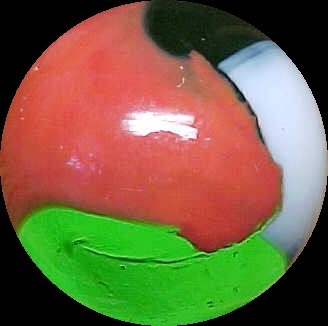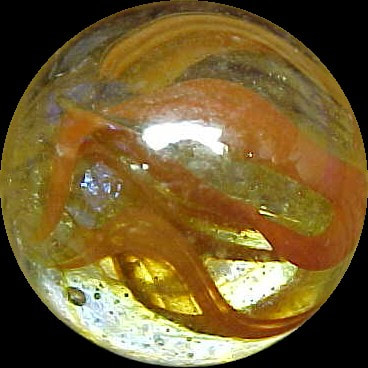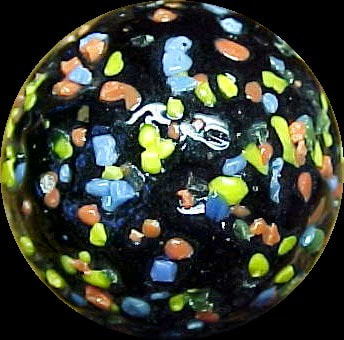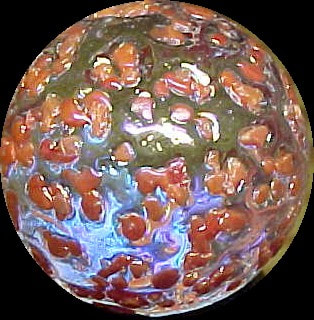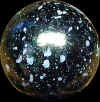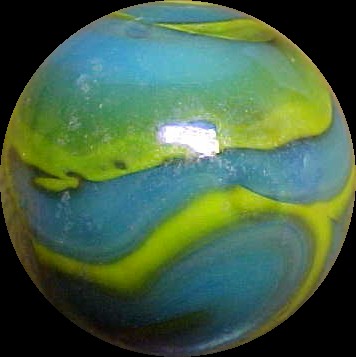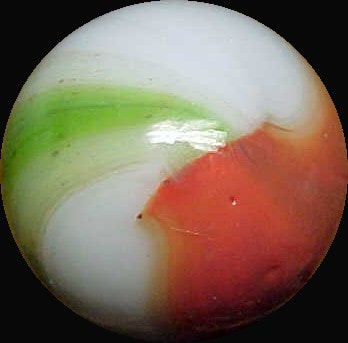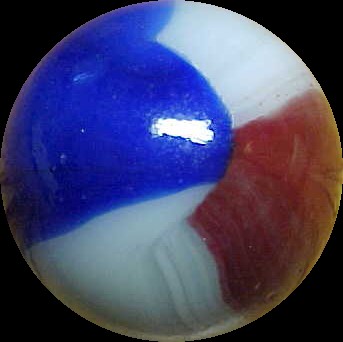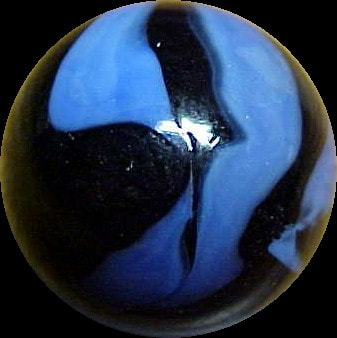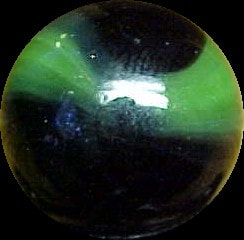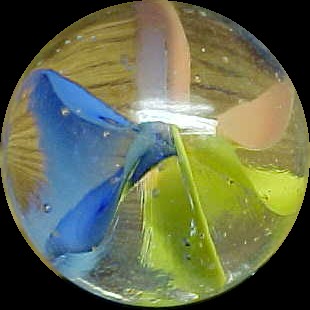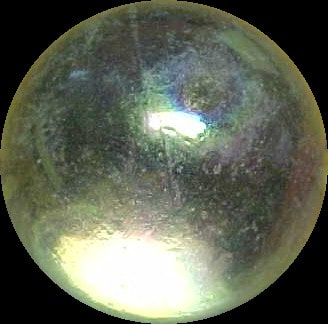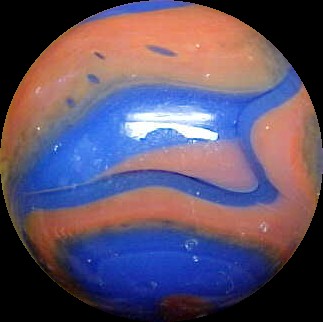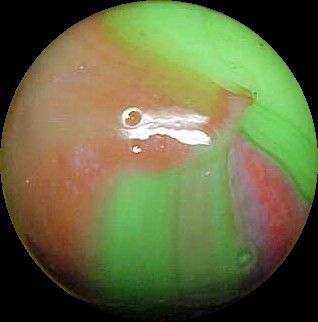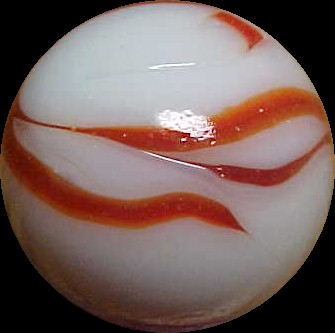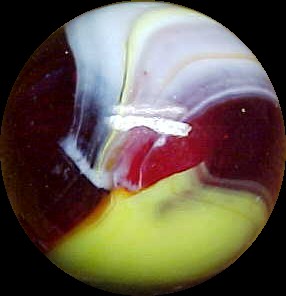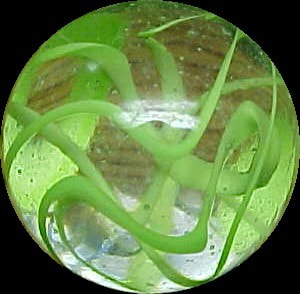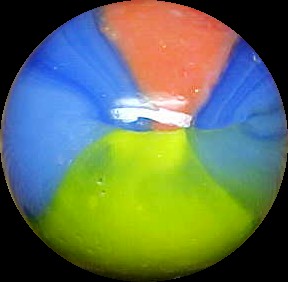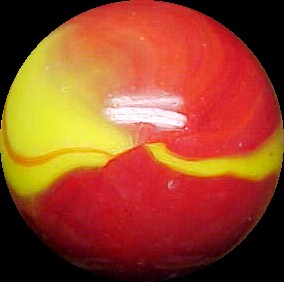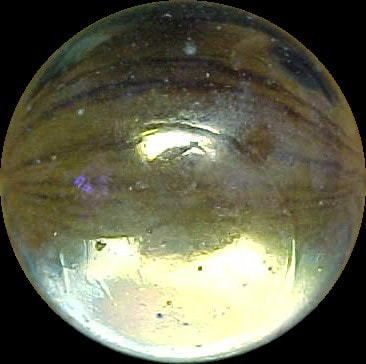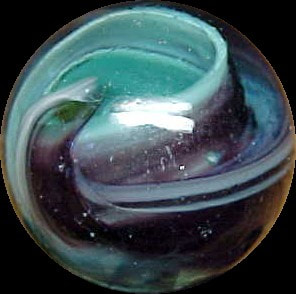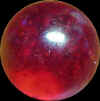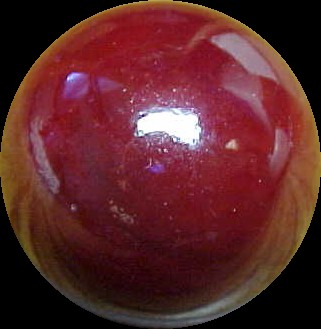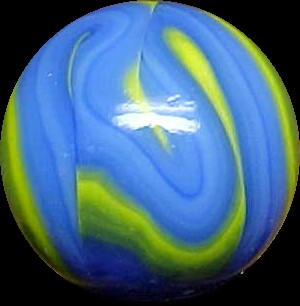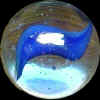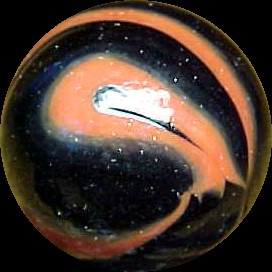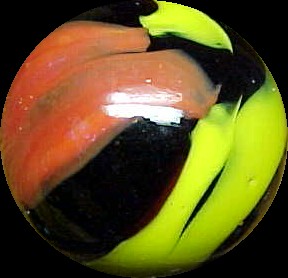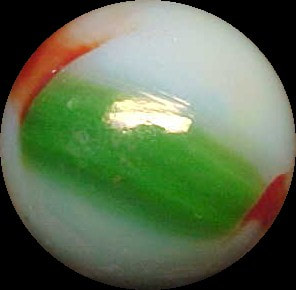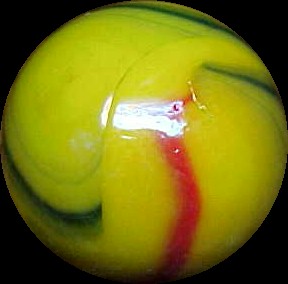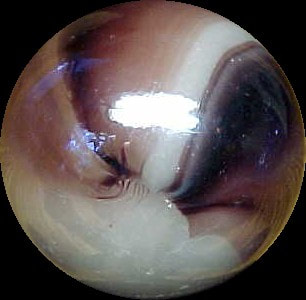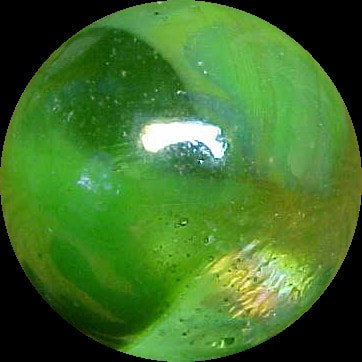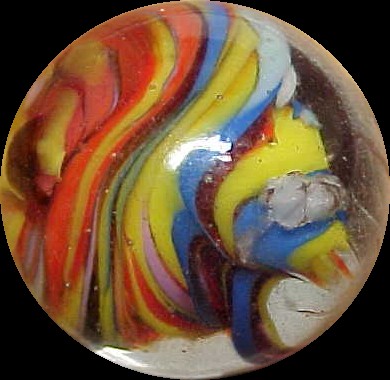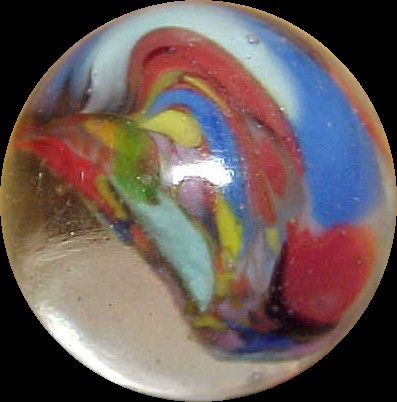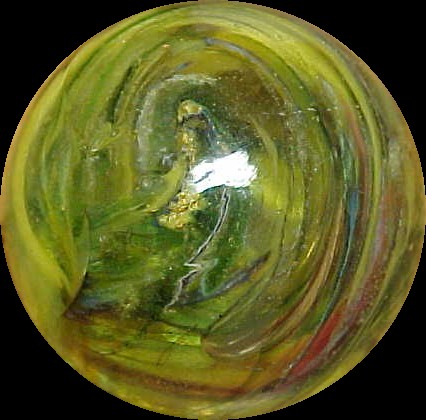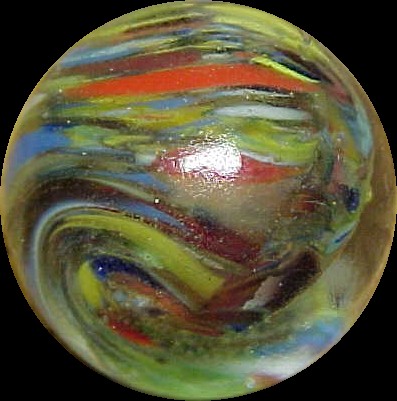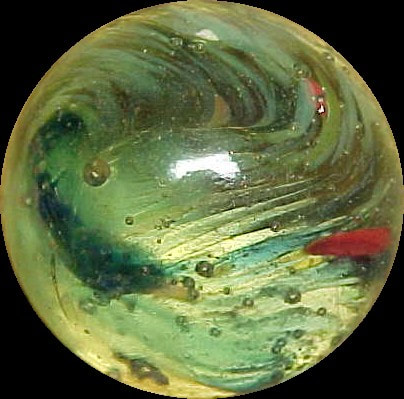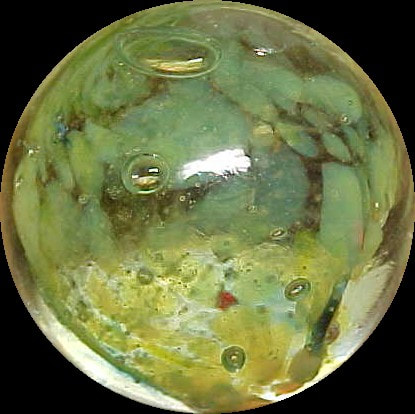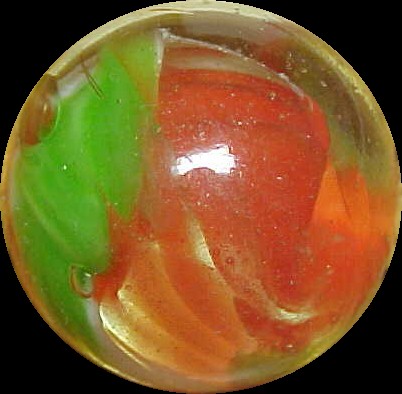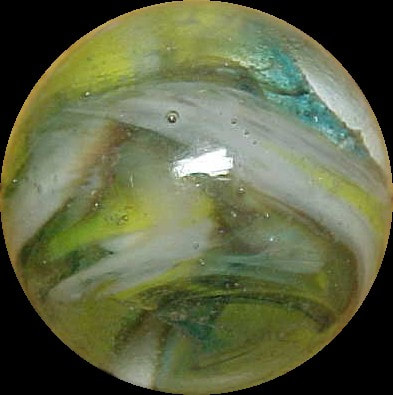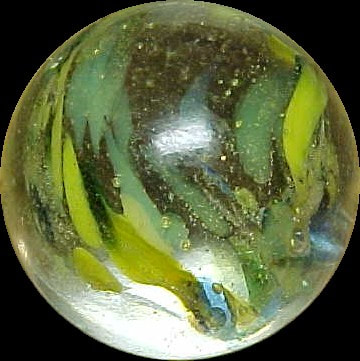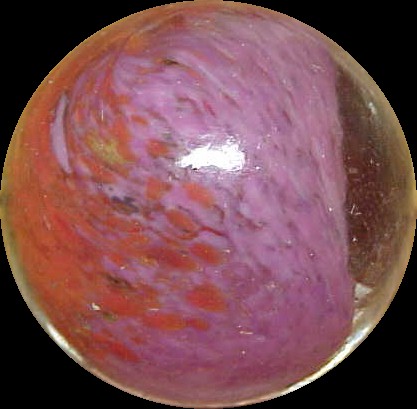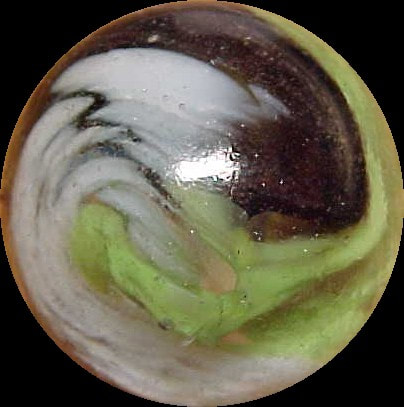VACOR DE MEXICO (1930-PRESENT)
COMPANY HISTORY
Vacor de Mexico originated in Guadalajara, Mexico, in 1930. It began by producing clay marbles but by around 1934 was manufacturing glass marbles with two machines. Today it is the world's leading manufacturer of marbles (making over 12,000,000 marbles each day!) and exports its products to over 40 countries.
Marbles were distributed by Mega Marbles in the USA in the late 1990s into the mid 2000s. Currently the distribution rights belong to the House of Marbles in the UK.
Vacor de Mexico originated in Guadalajara, Mexico, in 1930. It began by producing clay marbles but by around 1934 was manufacturing glass marbles with two machines. Today it is the world's leading manufacturer of marbles (making over 12,000,000 marbles each day!) and exports its products to over 40 countries.
Marbles were distributed by Mega Marbles in the USA in the late 1990s into the mid 2000s. Currently the distribution rights belong to the House of Marbles in the UK.
IDENTIFICATION TIPS
Little is known about the early marbles produced by Vacor de Mexico. It is though they began manufacturing catseye marbles in 1944 and if so these would predate those imported to the United States by Japan in the years following World War II.
Since the 1990s, Vacor de Mexico marbles have become more familiar to collectors, as each year they release new styles, many of them comprised of bright colors. Each style has a name attributed to it by the company; such names include Agates, Black Panthers, Blue Macaws, Candies, Corals, Dalmatians, Destroyers, Diamonds, Fiestas, Flames, Galacticas, Galaxies, Glitters, Green Parrots, Jaspers, Jupiters, Mambas, Meteors, Milky Ways, Mirages, Oldies, Owls, Oxbloods, Pandas, Pearls, Picassos, Pirates, Red Devils, Ribbons, Saharas, Scorpions, Serpentinas, Silvers, Spaghettis, Spotties, Stardusts, Sunsets, Tapeworms, Thunderbolts, Tidal Waves, Tomatoes, Turtles, Wave Breakers, Yellow Jackets, Yellow Perils, and Zulus, to name a few. They are becoming increasingly popular to collectors.
The key to identifying modern Vacor marbles and differentiating them from older styles, which they often resemble, is in the glass. Vacor marbles often have an "oily" sheen that makes them shinier than most older marbles. Second, the glass surface often has an "orange peel" texture. This is especially apparent on larger marbles, but even the smaller ones, if inspected under magnification, will manifest tiny pits that really do make the surface look like the peel of an orange.
Most Vacor de Mexico marble can be categorized as either patches or swirls. These can be further subdivided by the base glass: transparent or opaque. Furthermore, either type of glass may be regular or iridescent. Overall, marbles from this company are rather dull, though some new styles, like the Michelangelo, are actually quite striking.
During the 1990s Vacor also produced a series of hand made marbles called 'Atmospheres' which were distributed through Toys R Us. They were sold in net mesh bags, each containing three marbles. These marbles lack pontils and contain multicolored swirls that loop within a clear glass matrix. They measure around 1 1/16" and are sometimes mistaken for large Christensen "Cyclones" by inexperienced collectors. These marbles are demanding a premium in 2020.
ORIGINAL PACKAGING
Sold in net bags and blister packs. They can be privately lableled. For example Kim'Play company sells them.
Little is known about the early marbles produced by Vacor de Mexico. It is though they began manufacturing catseye marbles in 1944 and if so these would predate those imported to the United States by Japan in the years following World War II.
Since the 1990s, Vacor de Mexico marbles have become more familiar to collectors, as each year they release new styles, many of them comprised of bright colors. Each style has a name attributed to it by the company; such names include Agates, Black Panthers, Blue Macaws, Candies, Corals, Dalmatians, Destroyers, Diamonds, Fiestas, Flames, Galacticas, Galaxies, Glitters, Green Parrots, Jaspers, Jupiters, Mambas, Meteors, Milky Ways, Mirages, Oldies, Owls, Oxbloods, Pandas, Pearls, Picassos, Pirates, Red Devils, Ribbons, Saharas, Scorpions, Serpentinas, Silvers, Spaghettis, Spotties, Stardusts, Sunsets, Tapeworms, Thunderbolts, Tidal Waves, Tomatoes, Turtles, Wave Breakers, Yellow Jackets, Yellow Perils, and Zulus, to name a few. They are becoming increasingly popular to collectors.
The key to identifying modern Vacor marbles and differentiating them from older styles, which they often resemble, is in the glass. Vacor marbles often have an "oily" sheen that makes them shinier than most older marbles. Second, the glass surface often has an "orange peel" texture. This is especially apparent on larger marbles, but even the smaller ones, if inspected under magnification, will manifest tiny pits that really do make the surface look like the peel of an orange.
Most Vacor de Mexico marble can be categorized as either patches or swirls. These can be further subdivided by the base glass: transparent or opaque. Furthermore, either type of glass may be regular or iridescent. Overall, marbles from this company are rather dull, though some new styles, like the Michelangelo, are actually quite striking.
During the 1990s Vacor also produced a series of hand made marbles called 'Atmospheres' which were distributed through Toys R Us. They were sold in net mesh bags, each containing three marbles. These marbles lack pontils and contain multicolored swirls that loop within a clear glass matrix. They measure around 1 1/16" and are sometimes mistaken for large Christensen "Cyclones" by inexperienced collectors. These marbles are demanding a premium in 2020.
ORIGINAL PACKAGING
Sold in net bags and blister packs. They can be privately lableled. For example Kim'Play company sells them.
VACOR DE MEXICO GALLERY
(Hover your mouse or lightly touch the image to see the type of marble. Click to view the full size image)
(Hover your mouse or lightly touch the image to see the type of marble. Click to view the full size image)

